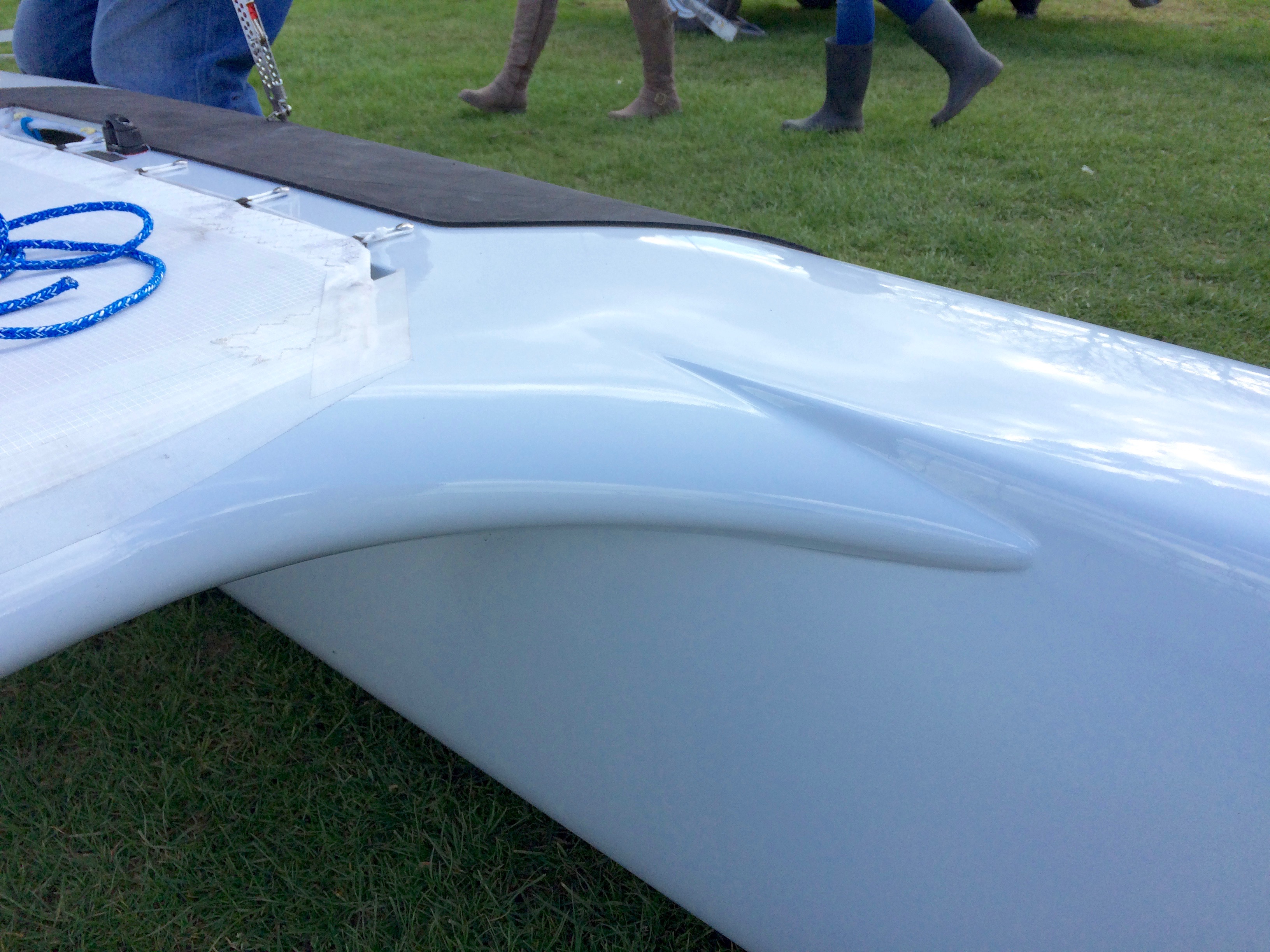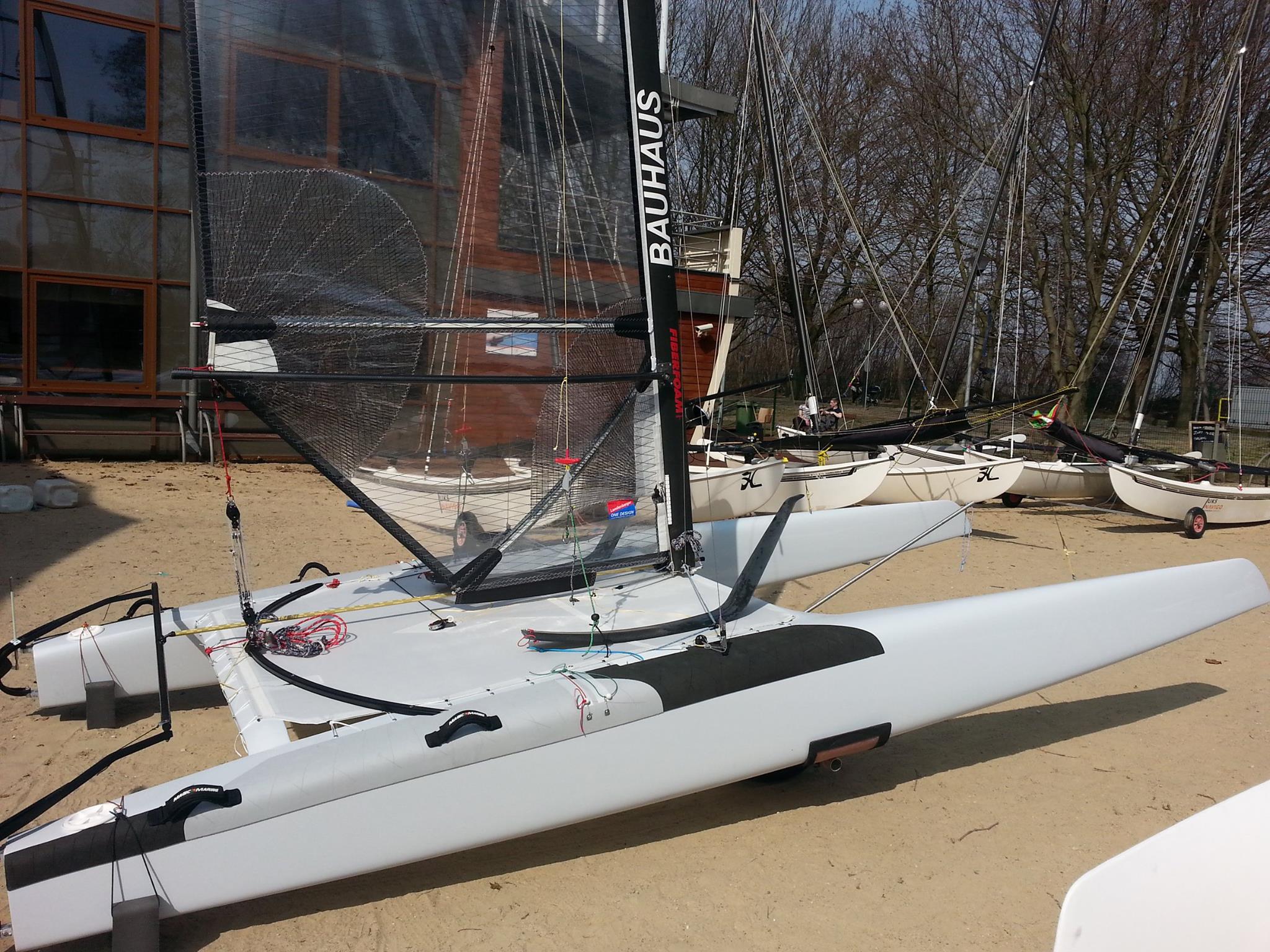An insight into the design thinking behind the new eXploder Ad3
We had chance to look in detail last weekend at the latest eXploder Ad3 when one of a pair, just brought into the UK, was unwrapped by Colin Bannister at Rutland SC last weekend. He was amongst the first to take delivery of the new 2016 version along with the 2014 UK National Champ and World No.15, Sam Newton, an eXploder team flyer.
Whilst not as radical looking as the new 2016 DNA, the Ad3 is an improvement on earlier versions, both in terms of aerodynamic design and build quality, and will certainly offer an economic way to achieve great racing performance.
Former Artemis design team member and Spanish ‘A’ class sailor, Gonzalo Redondo CEO of D3 Applied Technologies, talks about the design solutions he and Jakub Kopyłowicz incorporated into the new eXpolder Ad3.
'It was a pleasure to get involved with an A-Cat project after the work we did for the DNA Z-boards in 2014. I always had excellent experiences with Jakub from eXploder. He is a passionate, hard working builder with a solid group of top sailors sailing his boats, which is fantastic when it comes to getting feedback. Also the A-Class is a great boat as a designer, as one can gather his own feedback.
We initially started designing the new appendage set for the A15 and Ad3. Appendages are the core of performance. We have some very refined CFD (Computational fluid dynamics) and VPP (Velocity Prediction Program) tools that allow us to test not only the efficiency of the foils, but also look at the flight dynamics. However, small cats are so dependent on crew weight that prototyping and testing is key to validating the models. The A Cat is part of our internal R&D, being a platform around which we are developing and validating tools which we can later use for other projects. For instance we have just released the new North Wind 55 with Z foils and T rudders.
Since Jakub does not need any 3rd party to make molds he can prototype very efficiently, which is why the current boards are named the Z10, even if the previous production foils were the Z5. He has a great design perspective and knowledge with all his experience with As, so I would say, for this project, we formed a design team altogether.
The new Z10 daggerboards, are more tolerant to rake, allowing you to load them more and to fly earlier. Also the way they are designed, they provide better heave stability than the previous Z foils. Stevie Brewin won the Australian Nationals with these foils, although I am sure he would have won anyway with Z5!
Now one weak spot we found when we started were the lift generating rudders as they were lacking area. Theory and tests say L’s are more efficient, but somehow the feeling with T rudders is better. Right now we are satisfied with the current standard production rudders, the L2, although we also still offer T rudders. We are starting to deliver a reduced area and camber version, the L3, for the lighter sailors and also for heavy wind conditions. Ideally every sailor would have 2 sets, one for light and another for windy conditions. Heavy or mid-sized sailors will find that the larger rudder elevator, the L2, might suit them better. At the end of the day this is something we learned from other foiling projects we were involved with, such as kitefoils and Moths.
All new appendages are compatible with the A15 boats. Otherwise for previous platforms I have seen very good refits. For instance, here in Spain we have Philip Griffiths and I have seen Stefano Tacchi’s refits in Facebook and they look very good too!
When we were satisfied with the set of appendages, we started working on the platform design. Jakub had all the experience of the previous eXploder and Mayfly projects, so he had a clear idea of the things that we wanted to improve from a manufacturing perspective to make the boat lighter and easier to build. Also, new hulls are asymmetrical so, as we need 2 sets of molds, he can build twice as many boats. This helps a lot when it comes to refining the aero design.
From a performance point of view, the hull is slimmer and skinnier than the previous one. The bow is smaller and overall platform height is about 3cm lower. All these features reduce windage drag.
Also we modified the rocker-line a little bit and cross sections to improve skimming characteristics, which is what you do when you can’t foil due to waves. This is a very usual condition in many venues, so pitch stability of the hull is still key. We took some risks in some areas, but so far they seem to pay off. I do not understand any development or learning process without taking risks. The beam to hull connection has been improved so that we take a better advantage of the double trampoline and the endplate effect we have nowadays with deck sweepers. When it comes to aero design we learned a lot from our collaboration with a client we have who is designing racing powerboats reaching over 100 knots. The front beam is almost flat, making the platform very low profile. For foiling you would like a low center of effort of the sail so the flat beam is trying to achieve just that.
We are all very satisfied with the current state of the Exploder project and I have the feeling we are in the right path and with the right team and design philosophy.'





